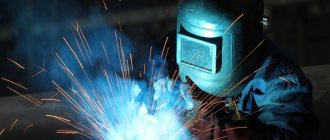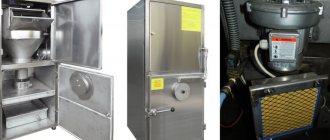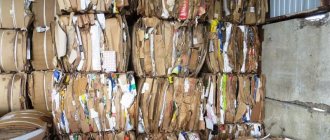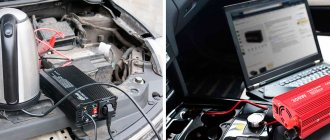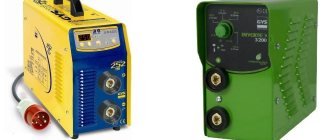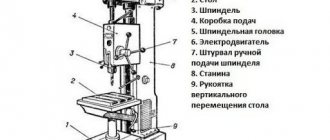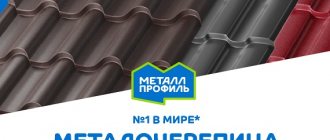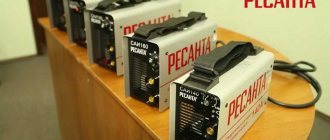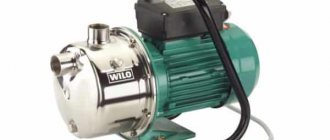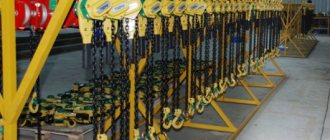An internal combustion engine consists of many elements, components, and assemblies that are constantly exposed to high temperatures and are in motion. This leads to various negative effects - scale formation, increased fragility, mechanical deformation, cracking. To increase the shelf life of such elements, lapping paste (PP) is used. It is usually used for processing automotive valves.
But what exactly are the functions of the lapping paste? What to consider when choosing a PP for a car? And is it possible to make lapping paste yourself? Below we will find out the answers to these questions.
General information about lapping paste
Lapping paste is used for lapping valves that are part of internal combustion engines. The lapping procedure improves the physical and technical characteristics of valves (strength, elasticity, hardness, absence of cracks), and also allows to increase the service life of the valve. Lapping is performed in three cases:
- Replacing old valves with new ones. Lapping reduces the risk of cracking. This treatment minimizes contact of the metal surface with liquids, which reduces the risk of scale and rust formation.
- Overhaul of a car or engine. If the engine is used for a long time, scale forms on the valves, which negatively affects the technical and operational characteristics of the part. If the part is old, it can be replaced. If the part is in good condition, it can only be treated with PP - in this case there will be no need to replace it.
- Urgent car or engine repair. Mechanical damage during an accident is distributed unevenly throughout the car. If the engine has received slight damage, then you do not need to replace the valves - you can only treat them with lapping paste, which will strengthen the parts, making them stronger and more reliable.
There are two types of PP - homemade and factory-made. Homemade mixtures are made from scrap materials, and their cost is low. However, such mixtures have a major drawback - the quality of such PP is low, which reduces their functional properties. Today there is a large selection of factory mixtures that contain many useful components that have a complex effect on engine parts.
PP differ in a number of parameters - grain size, viscosity, type, presence of additional additives, brand, packaging volume. In Russia, various lapping pastes for valves are available for sale. The basic popular brands are VMP Classic, VMP Professional, ABRO GP-201, Done Deal abrasive-grinding mixture, GOI. The purchase should be made taking into account the technical characteristics of your engine. Ideally, the selection of software should be carried out by an auto repair shop employee who has the appropriate experience and qualifications.
How to choose a lapping paste
Before moving directly to a discussion of specific brands under which certain lapping pastes are produced, it makes sense to familiarize yourself with the parameters that you need to pay attention to when choosing them. So, these include:
- Grain . This is one of the key indicators of any lapping paste. The coarse-grained composition is intended for roughing the working surfaces of valves and their seats. That is, it is the so-called “starting” one. With its help you can remove the largest burrs, chips, and scratches. As the grain size decreases, the purpose of the composition also changes. Thus, the finishing lapping paste is fine-grained and is intended for treating the smallest damage on valves and seats.
- Packing size . For one valve grinding procedure, only a small amount of paste is needed. Even if the car has 16 valves, the paste consumption will be insignificant. Therefore, it makes no sense for an ordinary car owner who decides to grind the valves in the engine on his own to buy a large package of this composition. Conversely, auto mechanics who repair engines, including lapping valves, on an ongoing basis can waste a significant amount of paste. For them, you need to choose more packaging. Specific packaging values depend on the manufacturer and its trading policies.
- Value for money . These indicators allow you to choose the best valve lapping paste for a particular car enthusiast. The concept of quality includes the durability of the hardened paste, ease of use, ease of application, and so on. The highest quality lapping pastes ensure a long service life, that is, the tightness of the combustion chamber during valve operation. However, the price of such compositions is usually higher than traditional ones. Therefore, the choice of one paste or another is always a compromise of several decisions.
Separately, it is worth mentioning diesel engines. To process diesel engine valves, as a rule, diamond lapping paste (which contains diamond chips) is used. This is due to the fact that in the production of diesel engines special metal alloys are used that are characterized by increased wear resistance. Therefore, when treating the valves of these engines with traditional pastes, it will be necessary to spend a lot of effort and time to achieve an acceptable result. And it is precisely diamond lapping pastes that make it easy to process even the aforementioned wear-resistant parts of diesel engines. Therefore, diesel drivers are recommended to pay attention to diamond pastes.
What are the functions of lapping paste?
Any valve of an internal combustion engine consists of two structural elements - a plate and a stem. The plate looks like a flat disk, which is located at the end of the leg. It fits tightly to the seat on the motor (this place is called the saddle). The plate must fit snugly against the seat to ensure complete sealing of the connection. Such a strict requirement has a simple explanation - the closer the plate is located to the seat, the less heat loss from the engine will be and the higher the efficiency of the internal combustion engine will be. In an ideal scenario, heat loss tends to zero, and all the heat goes to perform useful work.
However, it is not always possible to achieve a tight fit of the plate to the seat. This problem is further complicated by the fact that in the case of long-term operation of the engine, minor damage, scale, and rust form on the surface of the valve plates, which leads to a decrease in the tightness of the connection. The longer the engine is operated, the more the tightness of the connection weakens. The use of PP allows solving the following engineering problems:
- Restoring natural sealing. In fact, PP is an abrasive, and during processing, rust, scale, chips, scratches, and burrs are removed. As a result of processing, the plate becomes smooth, straight, and uniform. This leads to a tighter fit of the plate to the seat, which increases the tightness.
- Reducing oil to waste. Additionally, the elimination of external defects ensures that no oil is ejected during engine operation. This reduces the amount of oil lost, which minimizes the risk of scale, soot, and rust formation.
- Restoring engine compression. Due to small defects on the surface of the compression disk, the efficiency of the engine decreases. Treatment allows you to restore natural compression, which also normalizes the level of engine efficiency.
What to consider when choosing a lapping paste
PPs differ from each other in a number of parameters.
Technical specifications:
- Grain size. This parameter is key. Coarse-grained compounds are used for rough grouting, as well as for processing parts made of durable metal alloys (alloy steel). However, coarse mixtures cannot be used to process parts that are in good condition - in this case, the mixture may create additional damage and microcracks. Fine-grained mixtures are suitable for finishing parts, as well as for working on valves that are in good condition. If the part is durable, then it will be difficult to use a fine-grained mixture. Beginners are advised to buy PP with a medium grain size - this paste processes all major alloys well, and the risk of defects is minimal.
- Composition of the material. To treat gasoline engines, standard mixtures without any additives are used. If you are dealing with a diesel engine, then you should buy a mixture that additionally contains diamond chips. Diesel engines are made of ultra-strong alloys, so they require a particularly sharp abrasive to process them. Clean the disk and seat of a diesel engine using a regular mixture, but for this you will have to make additional efforts, and the processing time will increase by 4-5 times.
- Price and quality. High-quality mixtures are easier to apply and take longer to harden after dilution. However, they also cost more. Cheaper mixtures should be used immediately after dilution, as they quickly harden and lose their useful technical properties. However, they can save you extra money, which can be important in some situations.
For auto repair shops, it is recommended to buy a large package - this will save extra money.
Scope of application of diamond pastes by type
| Paste type | Washability | Consistency | Application area |
| G | ABOUT | M | Processing of ferrous and non-ferrous metals, alloys, non-metallic materials, steels and semiconductor materials. |
| L | IN | M | Processing of alloy steels, cast iron. ceramics, cermets, hard alloys, ferrite, sapphire. |
| X | V, VO | M, T | Processing of glass, semiconductor materials, carbide tools, dies. |
| E | IN | M | Processing of glass, semiconductor materials, carbide tools. |
Diamond pastes are produced with different concentrations of diamond powder. The higher the concentration, the higher the processing performance. This is achieved by changing the abrasive ability, i.e. the amount of material ground per unit of time.
Based on the concentration of diamond powder, pastes are divided into:
N
- Pastes of normal concentration
P
- Pastes of increased concentration
B
- Pastes of increased concentration
For convenience, a dye is added to the paste, by which its properties and characteristics (grain size and mass fraction of diamonds) can be determined.
Below is a table of diamond paste colors.
| Paste and label color | Diamond Powder Grit | Mass fraction of diamonds in paste, % | ||
| N | P | IN | ||
| Lilac | 125/100 — 80/63 | 40 | 60 | — |
| Lilac | 63/50, 50/40 | 20 | 40 | — |
| Red | 60/40, 40/28 | 8 | 20 | 40 |
| Blue | 28/20 — 14/10 | 6 | 15 | 30 |
| Green | 10/7 — 5/3 | 4 | 10 | 20 |
| Yellow | 3/2 — 1/0 | 2 | 5 | 10 |
| Does not stain | 1/0,5 — 0,1/0 | 2 | 5 | 10 |
Popular PP brands on the Russian market
In Russia there are many factory brands of PP on sale, which may have strong differences. Below we will look at several popular brands of pastes.
VMP Classic
The most popular brand of lapping abrasives on the Russian market. This material can be used to treat both diesel and gasoline engines. Can be used for both rough and final finishing. The average grain size is 70-90 micrometers, but during processing the grain is reduced by 5-10 times, which is a big plus (this ensures the versatility of the paste). PP does not deteriorate during storage and is easy to use. The brand is available in the form of plastic tubes with a spout, as well as in bags. The cost of a large tube weighing 400 grams is 700-800 rubles.
VMP Professional
It is an improved modification of the previous brand. Suitable only for treating gasoline engines (for treating diesel engines, it is recommended to use another brand of VMP Almaznaya). Can be used for roughing or finishing. The average fraction size is 45-75 micrometers, and during processing the fractions decrease in size. The brand is professional - it can be used to treat engines of both simple cars and racing ones. You can also rub the valves of trucks, buses, and various military equipment with the paste. The paste is available in the form of tubes and also in bags. The cost of a tube weighing 400 grams ranges from 900 to 1200 rubles.
VMP Diamond
This brand of PP contains diamond chips. Therefore, it can be used to process durable diesel engines. But it is not recommended to use it for grouting gasoline engines - grains of the material will leave scratches, which can lead to cracking of the valves. The grade is used for roughing or finishing. PP is not recommended to be mixed with other compounds. Available in four different varieties (tubes with composition + 1 kg bag). The cost of a large tube weighing 400 grams ranges from 1300 to 1800 rubles.
ABRO GP-201
ABRO GP-201 is available in the form of small jars, where the total weight of the two mixtures is 140 g. Each jar is divided into two sections:
- The first section contains COARSE paste. This composition is coarse-grained, and it is used for rough work, as well as for processing heavy-duty valves.
- The second section contains another PP, which is called FINE. This composition belongs to the category of fine-grained, and with its help final work is performed.
- Using PP is simple - first you use COARSE, and then use FINE. This processing method allows you to perform cleaning efficiently, conveniently, and quickly.
ABRO GP-201 does not deteriorate during storage. PP is classified as heat-resistant, so it can withstand high temperatures that a powerful engine can reach during operation. The cost of one such jar is 200-400 rubles.
Lapping and abrasive material Done Deal
The composition of this material is similar to ABRO GP-201 paste:
- The packaging is divided into two self-contained sections.
- The first section stores the universal medium-grain mixture.
- The second section stores the fine-grained mixture.
- For grouting, a person first uses a medium mixture, and then a fine one.
Done Deal is suitable for treating gasoline engines. The mixture does not contain large fractions, so it is not recommended for use on severely damaged valves. One package includes 2 identical tubes with a total weight of 50 g. The cost of one package is 300-500 rubles.
GOI
It is a lapping paste based on chromium oxide and stearin. Suitable for treating all petrol engines. The average cost of 1 package is 100-200 rubles. Available in three varieties depending on grain size:
- Experienced people should buy coarse and fine grain GOI, and the processing should be done in two stages.
- Beginners are advised to give preference to universal medium-grain PP, and processing can be done in one go.
Prices for diamond pastes
| p/p | ASM/ASN | Diamond concentration in carats per 1 kg | Price per 1 kilogram | ||||
| N | P | IN | N | P | IN | ||
| 1 | 60/40 | 400 | 1 000 | 2 000 | 4000 | 10 000 | 20 000 |
| 2 | 40/28 | 400 | 1 000 | 2 000 | 4 000 | 10 000 | 20 000 |
| 3 | 28/20 | 300 | 750 | 1 500 | 3 200 | 7 500 | 15 000 |
| 4 | 20/14 | 300 | 750 | 1 500 | 3 200 | 7 500 | 15 000 |
| 5 | 14/10 | 300 | 750 | 1 500 | 3 200 | 7 500 | 15 000 |
| 6 | 10/7 | 200 | 500 | 1 000 | 2 400 | 5 000 | 10 000 |
| 7 | 7/5 | 200 | 500 | 1 000 | 2 400 | 5 000 | 10 000 |
| 8 | 5/3 | 200 | 500 | 1 000 | 2 400 | 5 000 | 10 000 |
| 9 | 3/2 | 100 | 250 | 500 | 1 500 | 2 500 | 5 000 |
| 10 | 2/1 | 100 | 250 | 500 | 1 500 | 2 500 | 5 000 |
| 11 | 1/0 | 100 | 250 | 500 | 1 500 | 2 500 | 5 000 |
| 12 | 0,5/0 | 100 | 250 | 500 | 1 800 | 3 500 | 7 500 |
| 13 | 0,3/0 | 100 | 250 | 500 | 1 800 | 3 500 | 7 500 |
The price indicated is for 1 kg. Pastes are packaged in 40, 50, 100, 200 and 500 grams. Excluding VAT.
Please check the availability of containers at the time of ordering.
Prices from ten kilograms are agreed upon individually
Elbor paste
| p/p | LM | Ct | Price for 1kg |
| 1 | 60/40 | 400 | 12 000 |
| 2 | 40/28 | 400 | 12 000 |
| 3 | 28/20 | 300 | 10000 |
| 4 | 20/14 | 300 | 10000 |
| 5 | 14/10 | 300 | 10000 |
| 6 | 10/7 | 200 | 6000 |
| 7 | 7/5 | 200 | 6000 |
| 8 | 5/3 | 200 | 6000 |
| 9 | 3/2 | 100 | 3500 |
| 10 | 2/1 | 100 | 3500 |
| 11 | 1/0 | 100 | 3500 |
How to prepare PP yourself
How to make your own lapping paste. Below we will look at 2 main recipes that have proven effective in practice.
Recipe #1
To prepare you will need the following items:
- Several sharpening stones (2 or more). The abrasive must be fine. The shape of the stone can be any - circle, square, rectangle, oval.
- A clean work table or workbench. Before work, it is recommended to wash and dry the table. This will prevent water or third-party components from getting into the mixture.
- A large blank sheet of paper (A5 or A6 size). The paper is placed on a workbench or table (there may be microparticles of debris or dust on the surface of even the cleanest table).
- Low-viscosity, fluid motor oil. It is not recommended to use liquid varieties of oil - in this case, the quality of the mixture will be low, and processing will turn into torture.
- Plastic container with a large neck. The optimal container volume is 200-400 ml.
To prepare the paste mixture for lapping, place a clean sheet of paper on your workbench or workbench. Then place the first stone on top. Take the second stone in your hand and make forward-return movements with it along the first stone. As a result, you will form abrasive crumbs, which are needed for making paste. You only need to rub the stone against the stone very little - no more than 2 minutes. After this, carefully take a sheet of paper in your hand and pour the crumbs into a plastic container. Add machine oil to the container (the proportional ratio of oil and crumbs is one to one). Mix the mixture thoroughly until a homogeneous paste forms. The lapping paste is ready - it can be applied to the engine.
Recipe #2
Let's also look at an alternative recipe for making PP. We will need all the same elements as in the previous case - clean paper, a plastic container, oil, a table or workbench. The only important difference is that building bricks should be used instead of sharpening stones. Instead of solid bricks, you can use pieces of them (however, such pieces must have flat edges). The algorithm for preparing the grinding mixture will be almost identical:
- Clear the table of dust, wash it and dry it. Then place a blank sheet of paper on the table.
- Place a brick on a sheet of paper. Take the second brick in your other hand.
- Now you need to get brick chips - to do this, rub the second brick over the first.
- You should cut the brick for no more than 2-3 minutes - during this time the required amount of crumbs should form.
- Place the bricks aside, carefully take a sheet of paper and pour the crumbs into a plastic container.
- Pour machine oil into the crumbs in a ratio of 1 to 1. Stir the mixture until it becomes a homogeneous paste.
How to make lapping paste
If for some reason the car owner cannot or does not want to buy lapping paste in an online store or at a regular retail outlet, then further information is provided on how to make lapping paste with your own hands. The following are the most common recipes for making such a composition.
Recipe one
To work you will need:
- two sharpening stones with fine abrasive (can be of different shapes - semicircle, oval, etc., the shape in this case does not matter);
- blank sheet of paper;
- small plastic container with a volume of 200...300 ml;
- clean motor oil with low viscosity (fluid).
The algorithm for the manufacturing process of lapping paste is as follows:
- Place a blank sheet of paper on a flat surface (desktop, workbench).
- One of the stones (preferably one that is large) is placed on top of it.
- The second stone moves back and forth over the laid first one. The purpose of this action is to obtain abrasive crumbs during friction. The procedure takes 30...60 seconds.
- Turn both stones over, shake them well, tap them so that the maximum amount of abrasive from the stones falls onto a sheet of paper.
- Pour the resulting abrasive from a sheet of paper into a plastic container prepared in advance.
- The abrasive in the container must be filled with motor oil. Its brand does not matter in this case. However, the oil must be clean, unused, and free of soot and dirt. Also, the oil should be fairly fluid (not thick). The amount of oil directly depends on the amount of abrasive obtained. The approximate volume of abrasive and oil is 1:1.
- Mix the abrasive and engine oil until it becomes a paste.
- As a rule, a pinch of abrasive and a couple of drops of oil added to it are enough to treat one valve.
This recipe has a long history and has repeatedly shown its effectiveness in practice. Its use may well compete with factory-made products, despite the fact that the cost of producing such a homemade product is mere pennies.
Recipe two
To prepare you will need:
- Blank sheet of paper.
- Two ordinary building bricks (or pieces of bricks). In this case, it is important that one of them has at least one flat wall.
- A small plastic container with a volume of 200...300 ml.
- Clean motor oil with low viscosity (fluid).
The algorithm for making lapping paste yourself consists of the following steps:
- A blank sheet of paper is placed on the work table (workbench).
- A piece of brick with a smooth wall is placed on the sheet.
- The second piece of brick needs to be hewn onto the flat surface of the first brick so that the brick chips resulting from friction fall on the paper.
- You need to pour the resulting crumbs from a sheet of paper into a prepared plastic container.
- Add clean motor oil to it in approximately a 1:1 ratio.
- Using a handy tool, mix the resulting mixture until it becomes a paste.
The resulting composition can be used as a lapping paste for gasoline or diesel engine valves. This recipe has also shown its effectiveness for decades. Please note that homemade lapping pastes should not be allowed to get into the engine cylinders, as well as factory-made products. During the grinding process, the abrasive composition on the surfaces being treated can be renewed several times. At the end of the work, the homemade lapping paste must be removed from the valve and its seat using a rag soaked in solvent (or without it).
Lapping paste "GOI"
There is another less common lapping paste that is used not only for lapping valves, but also in many other technical areas. It is called GOI. The abbreviation GOI stands for State Optical Institute. In this institution, among other things, lapping pastes are developed for a wide variety of technical products, including valves. In particular, GOI pastes for lapping valves, nipples and taps consist of a mixture of corundum powder, chromium oxide and glass dust with kerosene or machine oil. The best on this list are GOI lapping pastes, the approximate composition of which is 75% chromium oxide and 10% stearin. Also, special powders with different grain sizes are used for grinding. Their range is quite wide, so when choosing, you must additionally read the technical specifications.
Currently, GOI lapping paste is produced in three types - for fine, medium and coarse cleaning according to TU 6-18-36-88. The first type of paste gives the surface a mirror shine, the second one removes streaks and burrs on the surface, the third one gives the surface a matte tint.
You can buy GOI paste in online stores or through private advertisements. This product is quite specific. Therefore, before using this or that GOI paste, always carefully read the instructions for its use, since there are many nuances. The price of the paste is usually low.
Conclusion
High-quality valve lapping paste ensures a tight fit of the contacting working surfaces, thereby increasing the level of tightness in the combustion chamber. Currently, the range of such compounds is quite wide, and the car owner always has a choice. However, it is necessary to choose one or another product based on the ratio of price and packaging volume, as well as the fact how often the car owner or technician plans to use the appropriate lapping pastes.
If valve lapping needs to be done once, then in order not to waste money, you can simply use the above recipes and make the lapping paste yourself. In terms of efficiency, such compositions can easily compete with factory ones, and their cost is symbolic, which allows you to save money.
